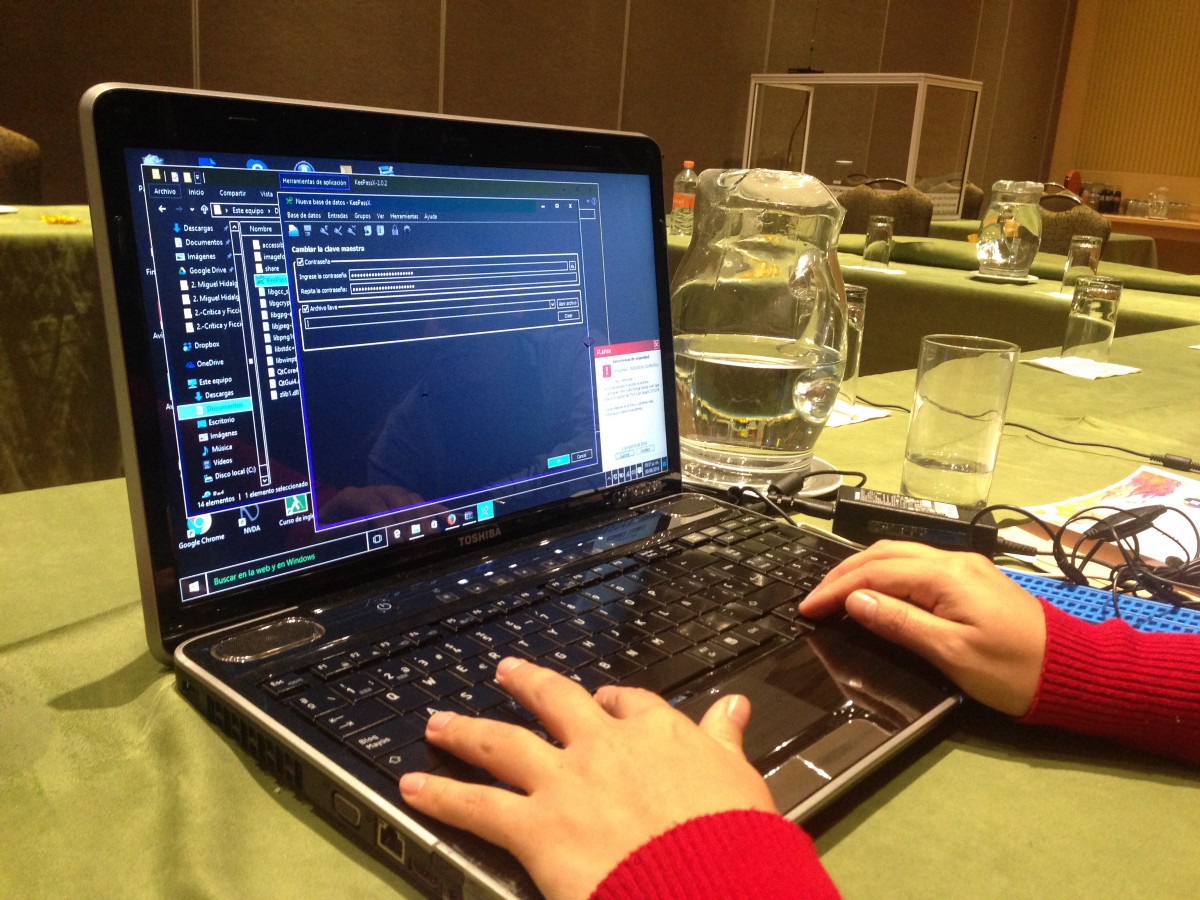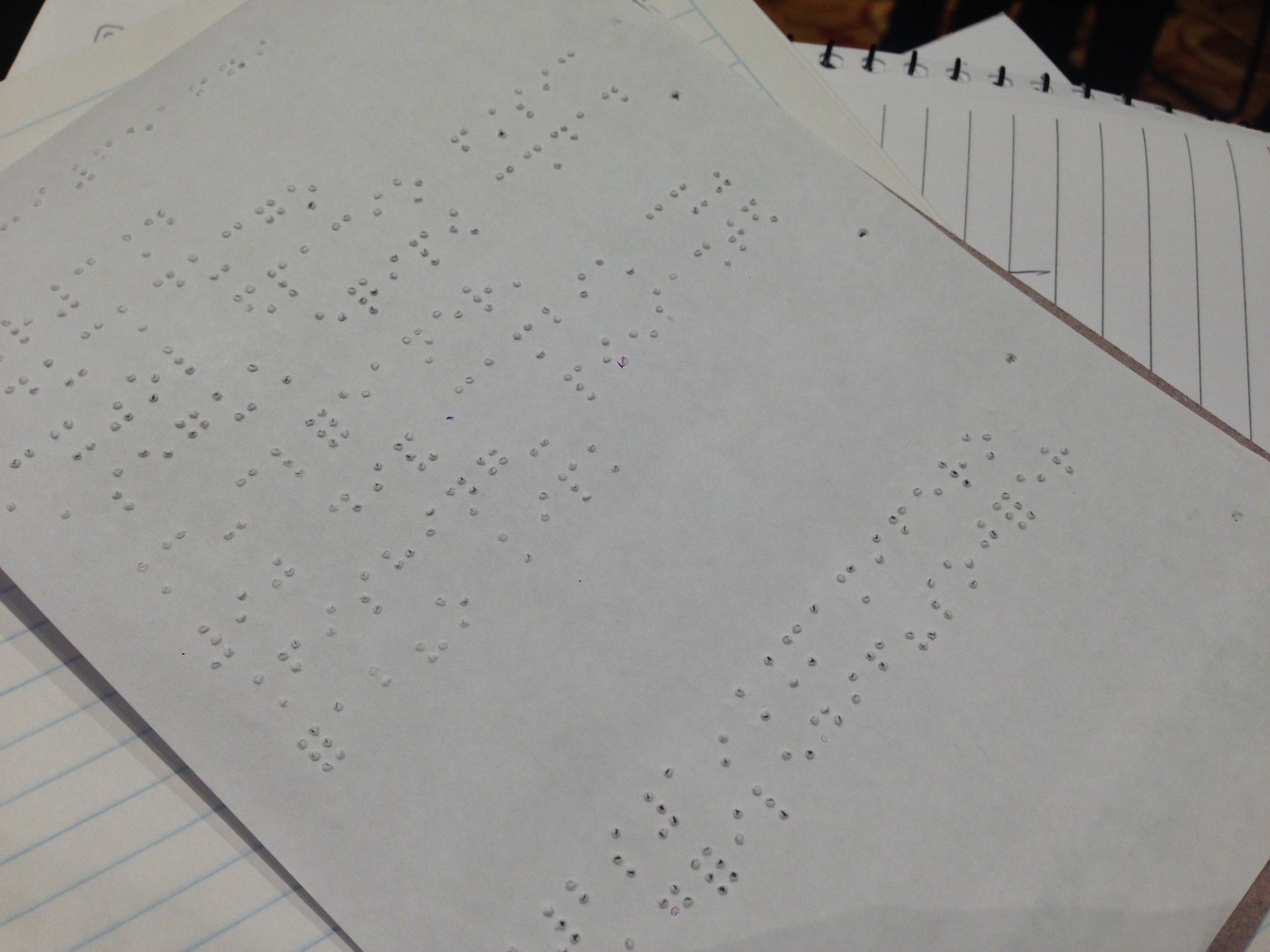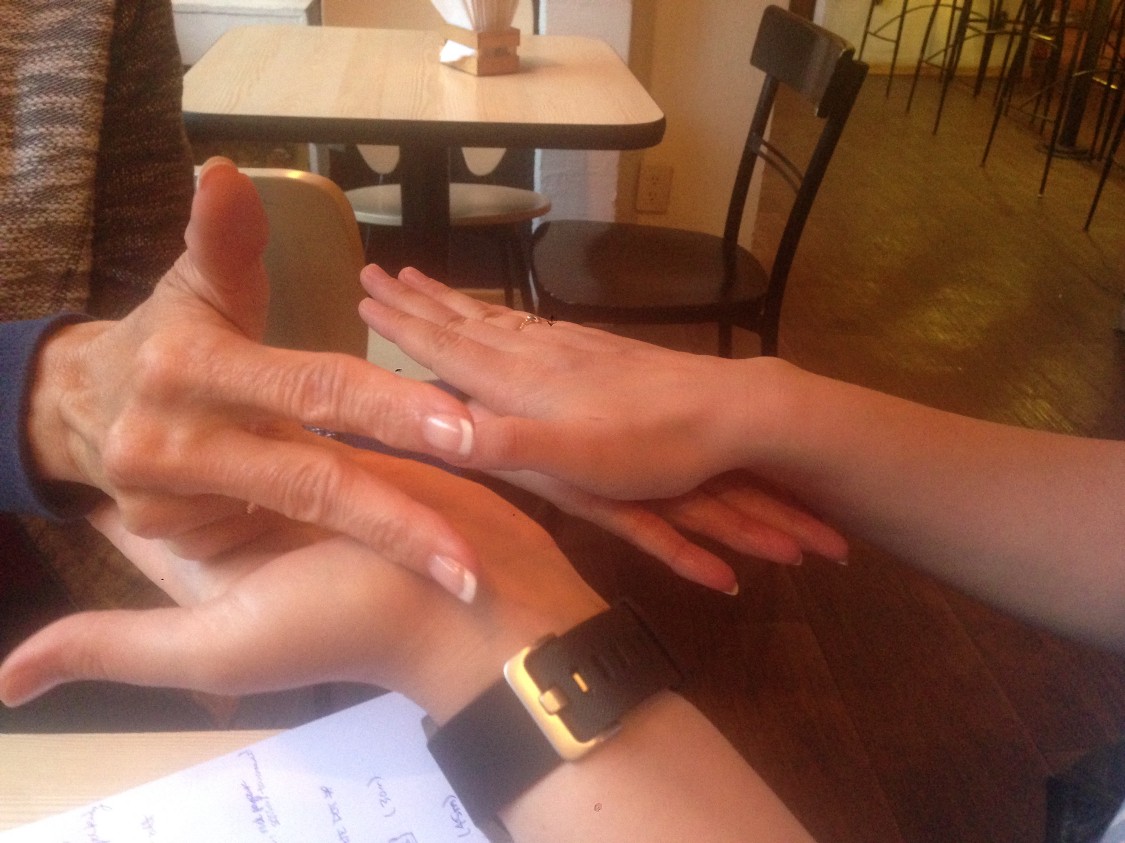Connecting developers with users improves tools for human rights defenders
Janvier Hakizimana has a radical idea.
“Governments and large global bodies like the United Nations subsidize new medications to fight disease. Why not also subsidize the adaptation of technology so that it can meet the needs of local communities?”
Adaptation — making tech tools more open, accessible, and customizable — matters in Janvier’s line of work. He works to support human rights defenders in the East and Horn of Africa who need secure tools to document and report human rights violations.
 *Testing the usability of secure apps through screen readers, at a USABLE training in Mexico. Credit: Mariel Garcia M*
*Testing the usability of secure apps through screen readers, at a USABLE training in Mexico. Credit: Mariel Garcia M*When a tool can’t adapt to local conditions — when it is entirely reliant on an internet connection, for example, users in low-connectivity areas may not be able to use it on a broad scale.
Relying on a hodge-podge of tools that each does one thing well makes work inefficient. Worse, relying on tools that aren’t secure puts high-risk communities in danger.
Janvier supports human rights defenders, in part as a trainer for USABLE, a project designed to connect high-risk users of digital security and communications tools with the developers who make those tools, in order to make the tools usable.
Next week, USABLE will hold its first UX Forum in San Francisco, bringing digital security trainers and activists from Africa, Latin America, Eastern Europe and the Middle East with developers in the center of US tech development, for three days of hands-on collaboration. USABLE’s focus on human-centered design focuses the process on the real-world needs of activists working on sexual orientation and gender identity rights, media, democracy, and human rights in challenging and threatening environments.
Mariel Garcia M, a technologist and USABLE trainer in Mexico, has seen first-hand the real risks for activists. “[Mexico] is a country where activists are at great risk; not just of intervention of their communications, but they’re also at risk of death, and torture.”
And while Mariel finds activists are well aware of the risks — “If you talk to activists who have been active since the sixties, they will tell you never to speak on the phone,” she says — there are numerous road blocks to their use of secure tools.
“Many developers and many of us would think if you have a secure tool, and your choices are secure or not secure, the activist will choose secure, but that doesn’t explain all the things that go into the decision-making process,” she says. “What if they’re the only person using that secure messaging app, and none of their friends are? Do they want to invest their efforts in getting everyone to adopt that tool, when they could be focusing on the next protest they’re organizing?”
 *Security workshop notes taken in braille. Credit: Mariel Garcia M*
*Security workshop notes taken in braille. Credit: Mariel Garcia M*Being outside the tech community also hinders adoption. “You have to be in certain tech circles to know that there is this tool, or to keep up with the discussion. What if this tool stops being developed — will [the activists] ever find out? They will have been to one workshop where they heard about it, but to stay updated, you really need to be part of a tech community, and many of them don’t do any tech-related work.”
In Ukraine, trainer Mykola Kostynyan has seen a dramatic change in awareness around digital security since the Euromaidan protests in 2013, but like Mariel, sees long-term change as a challenge for organizations.
“Before Euromaidan we hadn’t even heard of digital security — it wasn’t an issue. Now, thousands of people have awareness after going through training. A lot of organizations are migrating corporate email to more secure systems, and storing and transferring documents in more secure ways. We can see a lot of interest. We are very far from the ideal situation, where each organization has security policy implemented and has people responsible for that. We are very far.” The need for continuity and long-range organizational change directly supports Janvier’s idea, that adaptation of technology is worthy of broad support and investment by governments, and shouldn’t be left to one-off solutions.
“User-friendly software development is not really promoted and well-funded,” says Janvier, giving an example of a software project that was funded for five years of development, and rolled out to the local NGO community in Uganda, but ultimately abandoned. “Instead of starting new project, we would like to have software which will be used by this generation, and improved for next generation.
Finally, the trainers say there’s just no way to know all the needs of users without asking. Mariel recently led a USABLE workshop with activists focused on the needs of the visually impaired.
 *From a USABLE conference in Mexico, participants demonstrate an adaptation of Rock, Paper, Scissors for players with visual disability. Credit: Mariel Garcia M*
*From a USABLE conference in Mexico, participants demonstrate an adaptation of Rock, Paper, Scissors for players with visual disability. Credit: Mariel Garcia M*“Most digital security trainers have plenty of experience with the difficulties that people face when they don’t have disabilities. For example we know that a certain app has this particular bug. A digital security trainer can give you a pretty exhaustive list of what goes wrong with all these tools. But not many of us are in the community that needs special tools, like audio readers [for the visually impaired]. It brings interesting security risks. For example, how do the visually impaired use secure applications if the buttons are not properly tagged for screen readers to read aloud?”
Tools made with accessibility in mind are not necessarily made with security in mind, and vice versa, which is why building connections between users and developers is so vital.
“I wish that people would come together more often to collaborate at all levels. So that all the valuable feedback I gathered from one tool would reach the developer, and that someone would fund that. Trainings should be more informed by the people developing the tools, who have a deeper understating of how [the technology] works. I’m really excited to see USABLE promoting this kind of collaboration. I think it’s been missing from the ecosystem,” says Mariel.
“If I have connections with developers,” says Mykola, “I can give them some advice. And maybe try to get tool user sessions here in Ukraine independently, to test new tools and give feedback to developers — to start more than a separate event, more of a movement for usability.”
Re-posted from Internews’ Medium blog
UX in a High-Risk World is a public event scheduled for July 14 in San Francisco, in tandem with the UX Forum. Register for the event. At the event, Internews’ USABLE team will launch the UXFund Call for Proposals. UXFund is a small-grants program to support usability and accessibility improvements for open-source digital security tools.


